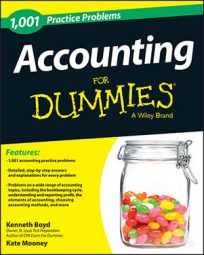Prepaids are expenses that are paid in advance, where the expense has not been incurred or used yet. In the following practice questions, you are asked to make the correct journal entries for prepaid insurance.
Practice questions
-
On July 1, a business paid $22,000 for six months of general liability insurance effective July 1. What is the proper entry torecord the transaction?
-
A company purchases insurance coverage for the next three years. The firm pays cash of $120,000. What is the proper journal entry to record this transaction?
Answers and explanations
-
Debit prepaid insurance $22,000 and credit cash $22,000
When a payment is made in advance (covering six months of insurance premiums), it's considered prepaid. Therefore, prepaid insurance should be increased (debited), and cash should be decreased (credited) for the amount of the payment.
-
Debit prepaid insurance and credit cash $120,000
The insurance is an asset when it is purchased because it will provide benefits to the company in the future. The insurance coverage doesn't become an expense until time passes. When insurance is purchased for future coverage, an asset account, prepaid insurance, is increased with a debit. Cash is decreased with a credit.
If you need more practice on this and other topics from your accounting course, visit Dummies.com to purchase Accounting For Dummies! Featuring the latest information on accounting methods and standards, the information in Accounting For Dummies is valuable for anyone studying or working in the fields of accounting or finance.

